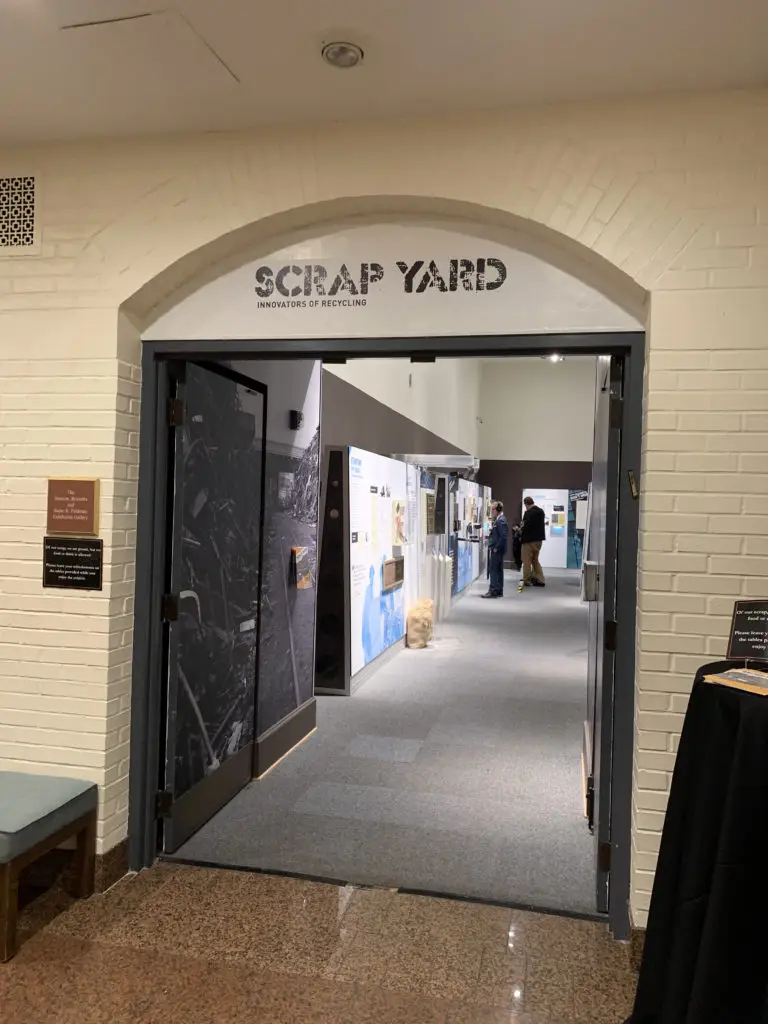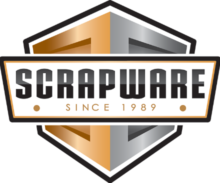The focus on clean energy and the demand for recycled materials are growing environmental concerns. Clean energy requires extensive use of metals like copper. Manufacturers and builders increasingly seek secondary raw materials, which are recycled materials that can be used in manufacturing and building instead of, or alongside, virgin raw materials. Scrap metal recycling is critical to these environmental efforts, but this is nothing new.
Scrap metal recycling has always been at the forefront of innovation and the environment.
Recyclers pioneer environmental and societal improvements
Recycling in general has played a central role in addressing environmental and supply problems dating back to the 1700s. For much of human history, people reused and recycled because new materials weren’t readily available or affordable. Such was the case with the first American paper mill established in 1690 by William Rittenhouse. The mill made paper from fibers from old cloth and employed people to gather old rags to be transformed into new paper.
Similarly, in the early 19th century, wool cloth was in great demand and spinning mills could not provide nearly enough new wool yarn to meet it. Inventor Benjamin Law developed a process combining finely shredded woolen rags with new wool to create a new textile known as shoddy. The new fabric was used for blankets and durable clothing.
Recycling innovation today
Environmental concerns today are forcing recyclers to increase efficiency. StartUs Insights, a company gathering data on technology innovations, startups, and trends, released a report last year on new recycling technology expected to gain steam in 2024. According to their report, new technology trends include chemical recycling technology and advanced mechanical recycling technology to increase the value of waste streams. Recycling facilities are integrating AI and the Internet of Things (IoT) to improve operational efficiency. Material Life Cycle Extension technologies are being explored to increase the useful life of materials without degradation of their properties. Finally, the report details the way in which big data and analytics are being used to identify process inefficiencies and facilitate flow management, predict waste generation levels and identify sources that produce more waste to enable more targeted services.
Scrap metal industry first innovators of recycling.
The prominence of the scrap metal recycling industry as an early innovator of recycling is explored in an on-line exhibit, Scrap Yard: Innovators of Recycling. The exhibit, first on display at the Jewish Museum of Maryland, is now available online at scrapyardexhibit.org. It traces the history and evolution of scrap yards in the United States and the prominent role of the Jewish community in the success of the scrap metal recycling industry.

For anyone interested in the history of scrap metal recycling or an examination of its development, this exhibit provides a wealth of material. It is a treasure trove of photographs and stories from earlier days. It gathers in one place information about the process of scrap metal recycling, its development with the growth of our nation and how the business of scrap metal recycling has changed. The original exhibit at the Baltimore museum was on display in 2019 and 2020, but the online version includes all of the content, illustrations and resources. The resources include educators’ guides that can be used as a classroom resource appropriate for every age.
Scrap Yard’s home page explains the focus of the exhibit:
“In the Yard”
This portion of the exhibit includes a glossary of scrap metal recycling terms and scrap code names. It provides an illustrated history of how scrap yards have evolved and discusses the introduction of technology such as scales, magnates, torches, and shearers. Advances in safety, equipment and sorting methods are also explored.
“Trash to Treasure”
A variety of recyclables including ferrous and non-ferrous metal and electronic scrap are explored in this section. It includes links on what each material is, how it is used and its value. This section also examines “Scrap in War,” looking at the impact of scrap metal recycling in wartime from the Revolutionary War to the wars in Iraq and Afghanistan.
“All Around Us”
The evolution of the scrap metal recycling industry in the context of what was going on in our country during various points in history is the focus of the section “All Around Us.” The rise of automobile ownership and scrap yards are examined in giving rise to the recycling movement. A budding environmental movement propelled the motto: Reduce, reuse, recycle.
“Scrap Stories”
Individuals working in the scrap metal recycling industry today recount their tales in the section “Scrap Stories.” Entrepreneurs who founded a scrap metal business decades ago and younger recyclers taking the helm of a family business today share their insights about running a recycling operation. They discuss, among other things, how they came to work in the industry and the day-in and day-out challenges and rewards of running a scrap metal recycling business.
For environmental and economic reasons, scrap metal recycling remains a vital industry today. To help foster industry recognition and growth, an understanding of its role in our nation’s history is important. The Jewish Museum of Maryland was awarded grants from both The Institute for Museum and Library Services and The National Endowment for the Humanities to make the exhibit possible. Additional contributors include companies and individuals in the scrap metal recycling industry, many from Maryland or with ties to the state. ScrapWare Corporation, which provides software to the scrap metal recycling industry, was proud to be an exhibit sponsor. ScrapWare’s software plays an important role in helping scrap metal recycling companies improve efficiency and profitability.
To view the online exhibit, visit its website, ScrapYardExhibit.org.
About ScrapWare Corporation: Since 1989, Rockville, Maryland-based ScrapWare Corporation has been the software of choice for the recycling industry. Its ease of installation and simplicity saves users time and money while helping them achieve compliance and maintain accurate business insights. With state-of-the-art functionality that‘s tailored to each organization’s unique requirements, ScrapWare is an advanced dynamic software solution that alleviates the most pressing recycling industry worries. For more information, please call (301) 517-8500 or visit https://www.scrapware.com/.

